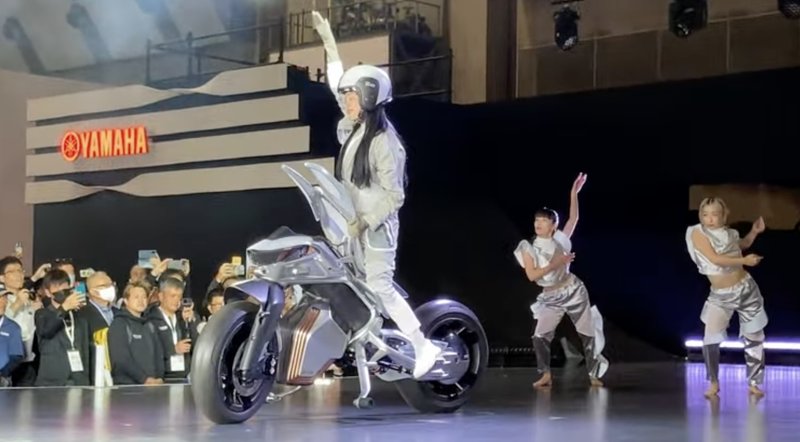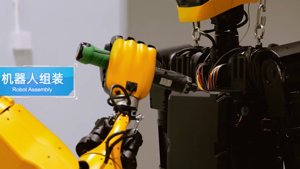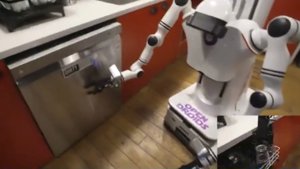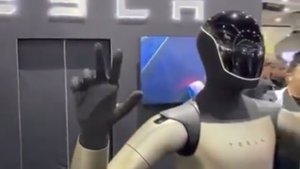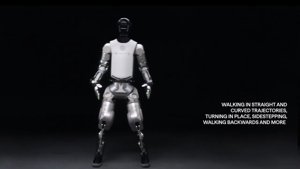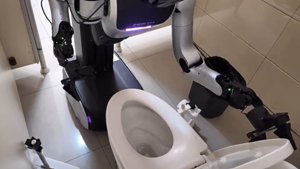The phrase “fatal motorcycle accident” has, regrettably, become a headline as common as a rainy bank holiday in Britain. For all the romantic notions of freedom, the open road, and wind-in-your-hair exhilaration, the stark reality is that straddling a motorcycle makes you exquisitely, terrifyingly vulnerable. Per mile travelled, the death rate for motorcyclists is nearly 22 times that of their four-wheeled counterparts. It’s a chilling statistic that casts a long shadow over every rider, a silent, unwelcome passenger. While automakers are relentlessly cramming cars with an ever-growing array of autonomous safety nets, two-wheeled transport has, for the most part, stubbornly relied on the rider’s skill, a healthy dose of courage, and a mere whisper of leather. Yamaha, however, appears to be posing a rather radical question: what if the bike itself simply refused to let you tumble?
Enter the Yamaha Motoroid, a concept so wildly, gloriously futuristic it looks less like a vehicle and more like a prop stolen directly from the set of a high-budget cyberpunk epic. First unveiled in 2017, this isn’t merely a motorcycle; it’s a self-balancing, AI-powered entity that aims to forge an entirely new kind of relationship between rider and machine. This, dear reader, is the physical manifestation of Yamaha’s Jin-Ki Kanno philosophy—that almost seductive exhilaration one feels when they become utterly at one with their machine. But here, that coveted unity is less about raw rider prowess and more about a deeply symbiotic partnership with an intelligent, ever-vigilant co-pilot.
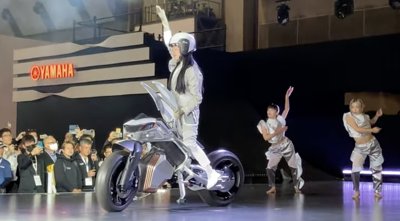
The Ghost in the Machine That Won’t Tip Over
So, how exactly does this mechanical marvel work its magic? The secret sauce lies in a proprietary technology aptly named the Active Mass Centre Control System (AMCES). Rather than meekly relying on gyroscopes, the Motoroid actively, almost defiantly, shifts its own centre of gravity. The battery, typically the heaviest component on any electric vehicle, transforms into a dynamic counterweight, gracefully moving to keep the bike perfectly balanced, even when utterly motionless. It can rise from its kickstand with a mere command, recognise its owner’s face and gestures, and then follow them around with the unwavering loyalty of a metallic, hyper-intelligent hound. It’s a level of devotion your actual dog can only dream of, and crucially, it won’t ever chew your favourite slippers.
The overarching goal here is to craft a machine that feels less like a mere tool and more like a living, breathing creature. The original concept and its more evolved successor, the Motoroid2, delve deep into this intriguing idea with sophisticated haptic feedback systems and a chassis that genuinely appears to breathe and react to its surroundings. The Motoroid2 even introduced a rather poetic “LEAF” structure, a haptic interface that gently wraps around the rider, subtly sensing their posture and communicating its intentions without the need for a single spoken word.
From Concept to… Centaur?
The evolution from Motoroid to Motoroid2 pushed the boundaries of what’s conceivable even further. The sequel boasts a truly unique swingarm that allows the rear of the bike to lean independently of the front, a feat of engineering designed to significantly enhance stability. It also boldly does away with traditional handlebars entirely, opting instead for fixed grips, thereby fundamentally altering the entire riding experience. Motoroid2 even audaciously proposes entirely new riding stances, including a “centaur” mode where the rider can stand upright, liberating their upper body completely while the machine handles the intricate dance of balance. It’s an audacious, almost mythological vision, hinting at a future where the physical demands of riding are deftly managed by the bike itself, leaving the human rider free to simply exist in the moment, unburdened.
While this might sound like outright heresy to the purists who live and breathe for the visceral challenge of mastering a powerful machine, Yamaha’s grand vision is firmly rooted in a safety concept it calls Jin-Ki Anzen. This philosophy posits that pairing inherent human skill with intelligent machine assistance can, in fact, forge a significantly safer world for riders.
Our Robot Overlords on Two and Four Wheels
This burgeoning trend of ceding control to silicon isn’t, of course, unique to Yamaha’s audacious designs. It’s the very same fundamental promise that underpins the entire autonomous vehicle revolution. While the Motoroid remains, for now, a gloriously far-out concept, vehicles like the Tesla Cybercab are already inexorably inching towards a driverless reality on our public roads. As we recently covered, Tesla’s latest autonomous systems are demonstrating increasingly sophisticated manoeuvres, subtly hinting at a future where robots aren’t just our chauffeurs, but our ever-vigilant guardians. Translation not available (en-gb)
The core philosophical question remains identical for both a self-balancing motorcycle and a self-driving car: are we, as a species, truly willing to trade ultimate control for the elusive promise of ultimate safety? For motorcyclists, the stakes are arguably astronomically higher. That raw, visceral connection to the machine and the unforgiving tarmac is, for so many, the entire, glorious point of the exercise.
For now, the Motoroid steadfastly remains an experimental platform, a fascinating design and engineering study rather than a production prototype ready for the showroom floor. The self-balancing technology will, in all likelihood, first filter down into more accessible scooters, making the act of riding significantly easier for novices and those less confident. But the larger, profound vision it represents is truly captivating. It’s a future where the term “fatal motorcycle accident” might, at long last, become a mere relic of a bygone, far more dangerous era. Whether riders will wholeheartedly embrace a bike that stubbornly refuses to fall, or instead view it as a soulless, automated intrusion, remains to be seen. One thing, however, is unequivocally certain: the training wheels of the future will be made not of plastic, but of pure, unadulterated code.
